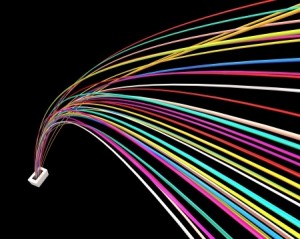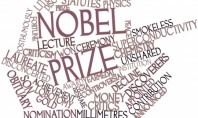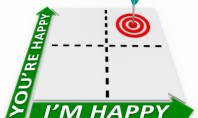Come Together

The history of technology is fascinating. It’s not just finding out more about, say, Alexander Graham Bell and the fact that he probably shouldn’t be remembered as the man who invented the telephone (arguably it was Elisha Grey – see Wikipedia to learn more), but in truth, probably no one person did.
Technologies are created by the coming together of a host of innovations, and the point at which they take off and become widely adopted is generally about when the last bit of the technological jig-saw is created and put in place. For instance, in the case of the telephone it wasn’t just what we now refer to as the “phone” (the combination of microphone and mini loudspeaker that form the “handset”) that was needed. It was also the network of wires to carry the signals (luckily for Bell and the Bell Telephone Co there were already tens of thousands of miles of wire already in place, put there by the existing telegraph companies). Then there was the telephone exchange, needed so that you could talk to many other people rather than to just the one person “hard-wired” to the other end of your own phone. Initially the exchange was little more than a simple board each wire ending in a socket but then human operators connected pairs of wires together by hand using wire connectors. (Later, a Kansas City undertaker by the name of Strowger invented the electro-mechanical exchange that replaced human operators, allegedly because the operator at his local exchange was the wife of a rival undertaker. Whenever a subscriber called asking to be put through to Strowger, she instead put them through to her husband.) And perhaps the key bit of the telephone system was the telephone bell (how else would you know that someone wanted to talk to you?), which ironically wasn’t invented by Bell, but rather by his assistant, Thomas A Watson.
Perhaps the most overlooked bit of the system was the telephone directory. When few people in a town or city had a telephone it was useful for every subscriber to have a book listing the other people who were subscribers, and how they could be contacted. Directories are disappearing because every business now has a phone, and we can find out their number either via an online directory, or more frequently, by getting their details from their own website. And we can assume that almost every individual also has a phone, but of course, we don’t want or need to list our own personal numbers because we can give the number to those friends and family who we want to call us, without making it available to strangers who we don’t want to hear from. And so the telephone directory is disappearing.
The same process of multiple bits and pieces coming together to create something quite new, and quite powerful seems to be happening in the realm of trading data. Let me explain…
It’s a truism that the rise of the Internet has decimated and then transformed the traditional news and entertainment media. The publishers of newspapers and magazines have seen declining sales, with great institutions like Newsweek and Lloyds List abandoning printed versions, and other titles simply disappearing altogether. But the appetite for news of all kinds has not gone away, with more and more people getting their news online from both conventional and less conventional sources. Similarly the film, television and music industries have suffered declining sales of CDs and DVDs, while downloads (both legal and pirated) and streaming have boomed. And the publishers of printed books, and traditional booksellers have seen sales hit by the switch to eBooks.
The drivers of this change are pretty conventional economics. When sellers of information had to embody that information in a physical form (ink on paper, scratches on vinyl LPs, chemicals on acetate, dimples on CDs and DVDs etc.) there were massive costs associated with that physicality. Huge printing presses were needed to print books, newspapers and magazines, and factories required to produce discs and films and video tapes. And the physical stuff that carried the information then had to be shifted around the country using trains, lorries, vans, bikes, again at enormous cost. And what you didn’t sell straight away had to sit on shelves in shops, or on pallets in big warehouses, again involving substantial costs. The economics of the news and entertainment industries weren’t really about the economics of information, but to a great extent were the economics of making, storing and distributing very bulky, very heavy, and very expensive paper and plastic in very large quantities. The physicality of the news and entertainment business had all sorts of consequences. For instance, the notion of the “remaindered book” is entirely a consequence of the economics of the physicality of the book: when a book isn’t selling, or isn’t selling fast enough it costs more for the publisher to store it than to virtually give it away to people who can sell it by pricing it at a fraction of the price it cost just a few months before. When a publisher produces books as eBooks then there is no such thing as a remaindered book as the costs of storage are virtually nil. Indeed, at this point the concept of the “long tail” kicks in and your extensive back catalogue becomes a major source of profit, with all of the costs of creation already accounted for every sale is virtually 100% profit.
So, shifting to the eWorld brings massive changes in the cost base of the news and entertainment businesses. But there is an even more profound change. Because of the physicality of, say, the newspaper, it didn’t make sense to distribute news on a story-by-story basis. Instead, businesses developed to produce bundles of news. A newspaper is a daily pot-pouri of 16 or 20 or 24 pages which brings together a selection of stories which people buy as a package. They may only read 20% of those stories, and skim another 20%, ignore another 20% and not even look at the remaining 40%. But when the news is delivered as ink on paper that makes more sense for both the producer and the consumer than printing and distributing only the 20% of stories that that particular person wants to read (particularly given that the next customer also only wants to read 20% of the stories, but they are a different 20%). (One clue to the power of this process of bundling is just to note that, quite remarkably, every day there is just enough news to fill, say, the pages of Guardian. And similarly, just enough news to neatly occupy the 30 minutes of Radio Four’s 6 o’clock news. And this “perfect fit” happens irrespective of how much news is actually happening. Of course, this isn’t really the case, as on some days, indeed, most days, far more news is “spiked” than is actually published. Hence the concepts of “a good day to bury bad news” (when there is an even higher than normal chance that any given piece of news will be spiked) and the “slow news day” when editors are scrabbling to find enough interesting news to fill the pre-determined bundle). When news and entertainment was delivered in physical formats almost everything was produced and distributed in bundles, from TV channels, newspapers, magazines, even cinema programmes, and so on.
The shift to online changes all that: the publisher only needs to deliver the stories that any particular person wants to consume.
Perhaps the clearest example of this shift is in the domain of academic publishing. When academic research journals were entirely physical ink-on-paper individuals, but more usually libraries, bought expensive subscriptions to, say, a year’s volume of 12 monthly issues of a journal. They would then skim the contents page and the abstracts of each of the selection of articles published each month and identify and then read just the one or two articles that were of interest to them. Now, almost all journals and all academics access journals online, and can pay article-by-article for just the ones they want to read. We have seen the same thing happening with television, with the development of pay-per-view, on-demand programming. And of course, the music industry has embraced the notion of unbundling, with sales of downloaded tracks selected by the consumer now exceeding those of CDs, which bundle together the producer’s selection of tracks.
But we are only part way through this process of unbundling. Although most news and entertainment industries have established, more or less willingly, and more or less enthusiastically, an online presence many of these do not use a pay-per-use payment model. More common are either a free access model, with the producer’s costs met by advertising revenue (for instance, “The Guardian” and “The Daily Telegraph”), or the paywall/subscription model (Murdoch’s “The Times/Sunday Times” and Pearson’s “Financial Times”). [similarly, in television we have the ITV/Channels 4 and 5 funded by advertising free-to-air models and those of the BBC and Sky subscription-based funding models]. Obviously, the paywall/subscription model is borrowed from, and maintains the bundling model of content production and distribution that has characterised the news and entertainment industries since their inception.
There’s a reason for this, and that is that current payment systems like Visa and MasterCard charge the merchant a fee for every sale they make. And those fees are sizeable. When the price being charged is small – a penny to view a news story, 10 cents to read a magazine article – then that fee can be such a large percentage of the price that a pay-per-item model is not sustainable. The threshold where the fees charged outweigh the value of the transaction to the merchant seems to be about $10-$12 (about £6-£7). Which is why only items with sizeable price tags have so far been traded on a pay-per-item basis.
Recently however a number of alternatives to the monopoly stranglehold of the conventional financial systems on payment systems have emerged. One alternative are systems using the virtual currency Bitcoin. For instance, Bitwall and the associated Coinbase, a digital wallet and supporting infrastructure recently announced that it is now supporting instant, free micropayments. This means that anyone with a (US) bank account buy and sell using the Bitcoin currency without suffering massive fees on each transaction. And that means that small items at low cost can be traded efficiently. Another Bitcoin-based system, Ripple, is offered by the payment software company OpenCoin. This service charges just 1/1000th of a cent per transaction, which is virtually free. Instead of the centralised systems used by Visa, MasterCard and conventional financial services to both implement and validate these transactions, Ripple uses a peer-to-peer network, dramatically reducing costs, and then redistributing the charges it does make amongst the members of that peer-to-peer network.
There are other micropayment systems emerging. For instance, mobile phone users in Africa have for some time been using M-PESA, which allows SMS messaging to be used to make small payments. And players of Grand Theft Auto Online (the multi-player version of the recently released GTA V) will find that playing the game involves micropayments. Players can earn “cash” within the game by completing various missions, such as stealing cars and winning races, and can use that money to buy (in-game) weapons, cars and houses. However, they’ll also be able to use real money to buy in-game “cash”. This will be achieved using cash cards, with the cheapest costing just £1.99, giving the player $100,000 of in-game cash. Significantly, that £1.99 is significantly below the £5-£10 threshold that applies to conventional credit card transactions.
The development of viable micropayment systems is another key part of the socio-technical system needed to transform the business of trading information. And a key consequence of this is likely to be that the current asymmetries in buying and selling data are going to become both more apparent and less sustainable. That is, if big organisations can sell small packages of information for small payments, then there is no reason why organisations cannot buy small amounts of information for small payments. It is the creation of the infrastructure needed to do just that that Handshake is setting out to do, together with the development of a culture of “fairtrade in information” that can make best use of that infrastructure.











